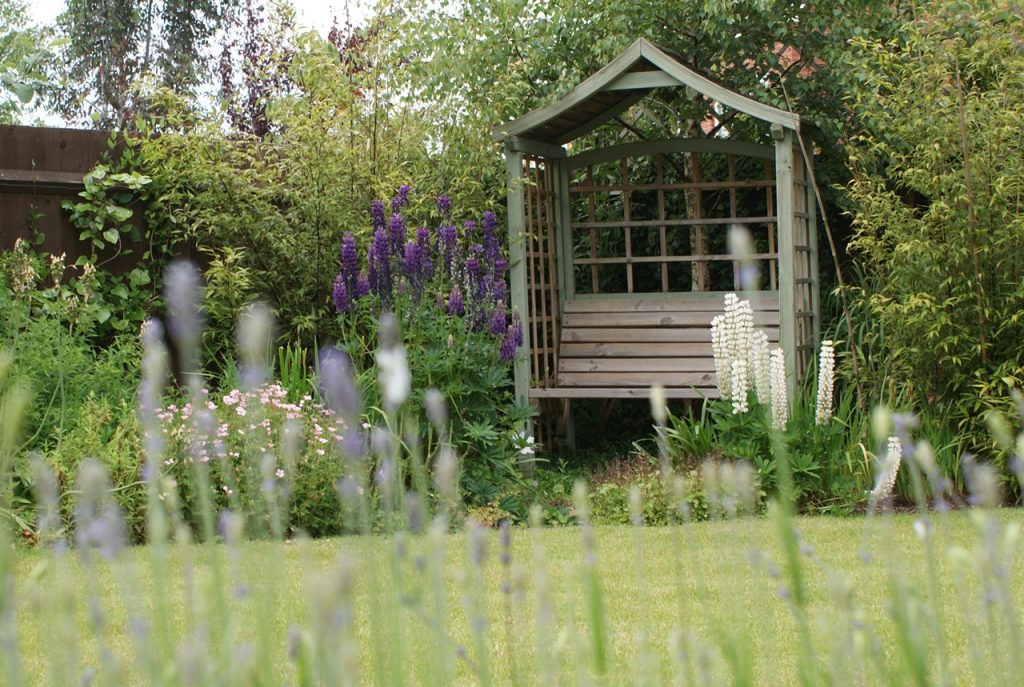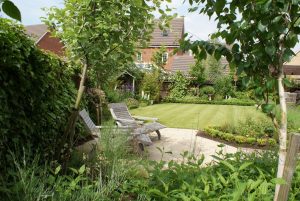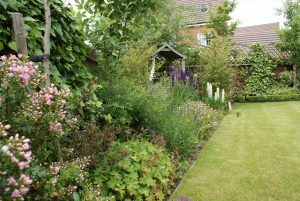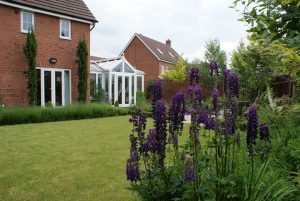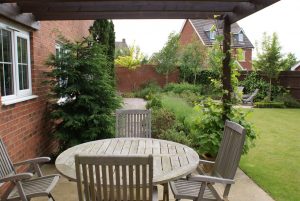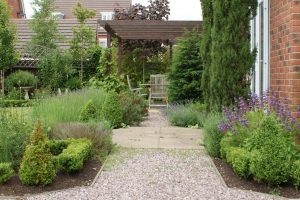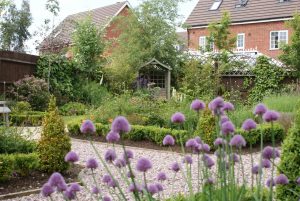Packed with beautiful and colourful traditional planting, this Classic English garden design was an absolute pleasure to landscape and plant. Many of my clients ask for low maintenance gardens, which is perfectly understandable for modern lifestyles. However, every once in a while the opportunity arises to design and create a garden that is filled with beautiful planting. These are the type of gardens that are famously ‘English’ right across the world. Whilst we don’t all relish the prospect of maintaining a garden like this, we can all appreciate it’s beauty.
Soil preparation is everything.
Here in Cambridgeshire most areas have a heavy clay soil, especially around Northstowe, Waterbeach and Ely. This can lead to drainage problems and you need to tackle this ahead of planting. If you don’t you risk loosing plants to waterlogging and winter frosts. This means digging over at least the top 600mm of soil to break up any surface compaction.
Then bulky organic matter (compost) can be blended into the soil to keep the structure open. Compost also has the benefit of promoting the multiplication and activity of soil fauna. This is the lifeblood of your garden, from the more obvious worms right down to microscopic nematodes and bacteria. All of these things are necessary for you plants to grow.
Classic English Garden Features
A simple timber pergola to dine under planted with a Muscadet grape vine adds some height to the garden. This provides a link between the flat garden and the vertical wall of the house. When the vine is in full leaf it will provide some respite from the heat of the sun on this south facing wall. Breaking up the solid paving with gravel pathways has multiple benefits.
Visually it offers a contrast to the uniformity of paving stones. It also reduces the hard surface area and therefor water run off. That equals less worry about what to do with all that surface water as it will just permeate down through the stone and can also take some of the water run off from the hard areas. If you are still not convinced of it’s benefits, it also saves quite a bit of money.
Multiple points of view.
When I am landscaping a larger garden I like to incorporate several seating areas into the design. In this example you’ll see the arbour seat which looks back toward the house and the planting near and around the conservatory. The dining area has views of the back borders and along the gravel pathway towards the herb and fruit garden. When sitting on the sun loungers you have the herb garden with all it’s wonderful fragrances on one side of you and a beautiful vista across the lawn to the richly planted herbaceous borders.
Small garden? No problem.
If you aren’t lucky enough to have a large garden like this the effect can still be created in a smaller space. There will be some limitations to the size of the palette used in the design. By using fewer plants varieties and carefully selecting those with a longer flowering time it is still possible to create a beautiful colourful garden. There are so many plant varieties for landscapers to choose from when designing gardens which have been selectively bred to flower for longer. Breeders have also been selecting varieties of traditional plants for compactness so they will fit better into todays smaller gardens. You wont be disappointed.
Choosing herbaceous plants for your own garden
The best way to select plants for you garden is NOT to visit your local garden centre. Garden centres will mostly stock young and immature plants. This will not give any real idea of how they will look in three to five years after planting.
A much better way is to visit your local Royal Horticultural Society gardens or National Trust properties. They are great places to see a classic English garden.
Here you will find mature planting and lots of it. If you are looking for summer colour that June – July is a good time to visit. Be sure to take a notebook and a camera. Photograph the things you like and note down the names of the plants that most interest you. Take time to look at what plants work well in combination, their colour, texture and form. When you get home you can research on the internet for more compact cultivars of the plants you like. Then simply use this as your shopping list at the nursery and avoid wasting money on impulse purchases which you may ultimately have to dig up.
